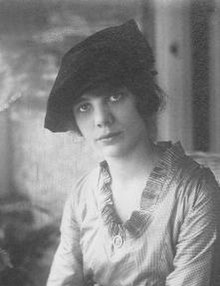Grace Gemberling
| Grace Gemberling | |
|---|---|

Grace Gemberling
|
|
| Born |
Grace Thorp Gemberling July 31, 1903 Philadelphia, Pennsylvania |
| Died | December 26, 1997 (aged 94) Bala Cynwyd, Pennsylvania |
| Resting place | West Laurel Hill Cemetery, Bala Cynwyd |
| Nationality | U. S. citizen |
| Alma mater | Pennsylvania Academy of Fine Arts |
| Known for | Artist, art teacher |
| Spouse(s) | W. R. Morton Keast (1888–1973) |
| Awards | From the Pennsylvania Academy of Fine Arts: Cresson Traveling Scholarship, 1923, 1924; Lambert Purchase Prize, 1930; Mary Smith Prize for best painting by a Philadelphia woman artist, 1930; Fellowship Prize, 1931 (Gold Medal Award), 1940. From the National Association of Women Painters and Sculptors: Oliver Beck Figure Composition Prize, 1933. |
Grace Gemberling (1903–1997) was an American artist known for the broad range of her subjects in paintings having a pronounced psychological as well as aesthetic impact. One critic said they conveyed a mood that was "ethereal, bold and engaged." Another said her work showed "a disciplined hand and a romantic eye" together with "a magical color sense." Known for her control of detail and successful handling of line and blocks of color, she was said to paint in a modernist style that stayed clear of abstraction and was remembered by a teacher and fellow artist as "the finest woman painter in Philadelphia during the 20s and 30s."
Born in Philadelphia, Gemberling grew up in that city and at a farm her family owned in Selinsgrove, Pennsylvania. She developed an interest in art while a student at Friends' Central School. With the encouragement of her parents, she enrolled in the Pennsylvania Academy of Fine Arts in 1920 and for the next three years she studied under Daniel Garber, Hugh Breckenridge, and Arthur Carles. Showing great promise as a student, she received the valuable Cresson Traveling Scholarship in both 1923 and 1924.
Gemberling's career as a professional artist began after she returned from European travel in 1924 and decided not to continue attending classes at the Pennsylvania Academy of Fine Arts. When in 1926 she exhibited with the Philadelphia Water Color Club, a reviewer said her painting, "Marine" was "gorgeous," and later that year when she exhibited at the Plastic Club, the same reviewer praised a portrait of hers, "Anna Ruth," as "nicely spontaneous." Thereafter, her paintings appeared frequently in Philadelphia exhibitions and quite often received favorable notice. From 1930 onwards, she showed in other East Coast locations including the Corcoran Biennials of 1930 and 1935 in Washington, D.C.; the Salons of America and National Association of Women Painters and Sculptors exhibitions of 1932 in New York; and exhibitions held by the North Shore Art Association of Gloucester, Massachusetts, in 1932 and 1933.
...
Wikipedia
